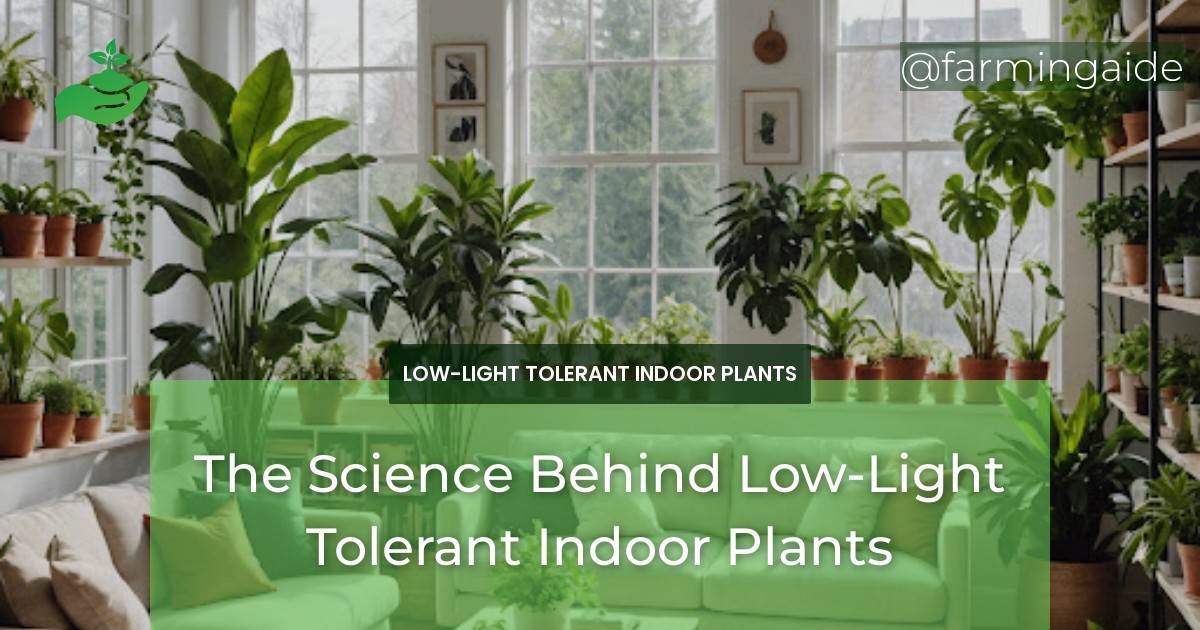As we bring plants into our homes, it’s essential to understand the science behind low-light tolerant plants. While most plants thrive in bright, sunny conditions, some have adapted to survive and even flourish in low-light environments. In this article, we’ll delve into the fascinating world of low-light tolerant plants, exploring the science behind their remarkable abilities and providing insights into the care and benefits of these incredible plants.
Key Takeaways
- Low-light tolerant plants have adapted to survive in conditions with limited natural light.
- Photosynthesis in low-light plants is more efficient due to their adaptations.
- Popular low-light tolerant plants include Chinese Evergreen, Pothos, and Snake Plant.
- Caring for low-light plants requires attention to optimal growth conditions and common care mistakes.
- Low-light tolerant plants enhance indoor spaces and have numerous benefits for health and wellbeing.
Understanding Low-Light Conditions
Low-light conditions refer to environments with limited natural light, often found in indoor spaces with limited window exposure or during winter months. In these conditions, plants must adapt to survive, and understanding the effects of low light on plants is crucial.
Low light affects plants in several ways, including reduced photosynthesis, slower growth rates, and increased susceptibility to disease. However, some plants have evolved to thrive in these conditions, making them ideal for indoor spaces.
Definition of Low-Light
Low-light conditions are typically defined as environments with less than 500 lux of natural light. To put this into perspective, a typical sunny day outdoors can have up to 100,000 lux, while a dimly lit room might have around 100-200 lux.
Effects of Low-Light on Plants
Low light affects plants in various ways, including:
| Effect | Description |
|---|---|
| Reduced Photosynthesis | Less light available for photosynthesis, reducing growth and energy production. |
| Slower Growth Rates | Plants grow more slowly due to limited energy availability. |
| Increased Susceptibility to Disease | Weakened plants are more prone to disease and pests. |
The Science of Low-Light Tolerance
Low-light tolerant plants have evolved remarkable adaptations to thrive in conditions with limited natural light. These adaptations enable them to optimize their energy production and growth in low-light environments.
One key adaptation is the development of larger leaves or more efficient chloroplasts, allowing plants to capture and utilize available light more effectively.
ALSO READ
Photosynthesis in Low-Light
In low-light conditions, photosynthesis is less efficient due to limited light availability. To compensate, low-light tolerant plants have adapted to optimize their photosynthetic pathways, increasing their ability to capture and convert available light into energy.
Some plants, like Chinese Evergreen, have developed more efficient chloroplasts to maximize energy production in low light.
Adaptations for Low-Light Environments
Low-light tolerant plants have developed various adaptations to survive and thrive in low-light conditions, including:
| Adaptation | Description |
|---|---|
| Larger Leaves | Increased surface area to capture more available light. |
| Efficient Chloroplasts | More efficient energy production in low-light conditions. |
| Thicker Cuticles | Reduced water loss and increased drought tolerance. |
Popular Low-Light Tolerant Plants
Several popular plants have adapted to thrive in low-light environments, including:
- Chinese Evergreen (Aglaonema)
- Pothos (Epipremnum aureum)
- Snake Plant (Sansevieria Trifasciata)
- Peace Lily (Spathiphyllum wallisii)
- Dracaena (Dracaena spp.)
ALSO READ
Types of Low-Light Tolerant Plants
Low-light tolerant plants can be categorized into three groups:
| Type | Description |
|---|---|
| Tolerant | Plants that can survive in low-light conditions but thrive in brighter environments. |
| Adapted | Plants that have adapted to low-light conditions and thrive in these environments. |
| Obligate | Plants that require low-light conditions to survive and thrive. |
Characteristics of Low-Light Tolerant Plants
Low-light tolerant plants often share certain characteristics, including:
- Thick, waxy leaves to reduce water loss
- Efficient chloroplasts for optimal energy production
- Slow growth rates in low-light conditions
- Tolerance to drought and low humidity
Caring for Low-Light Tolerant Plants
Caring for low-light tolerant plants requires attention to optimal growth conditions and common care mistakes to avoid.
Optimal growth conditions for low-light tolerant plants include:
- Moderate watering to avoid root rot
- Fertilization during the growing season
- Pruning to maintain shape and promote healthy growth
Optimal Conditions for Growth
Low-light tolerant plants thrive in environments with:
| Condition | Optimal Range |
|---|---|
| Temperature | 65-75°F (18-24°C) |
| Humidity | 40-60% |
| Watering | Moderate, avoiding waterlogged soil |
Common mistakes to avoid when caring for low-light tolerant plants include:
- Overwatering, leading to root rot
- Insufficient fertilization, limiting growth
- Inadequate pruning, causing legginess
Enhancing Your Indoor Garden with Low-Light Tolerant Plants
Low-light tolerant plants can enhance indoor spaces, providing numerous benefits for health and wellbeing.
Design ideas for low-light spaces include:
- Using plants with varying textures and colors to create visual interest
- Incorporating plants with air-purifying qualities
- Creating a layered, dimensional look with plants of varying heights
Benefits of Low-Light Tolerant Plants
Low-light tolerant plants offer numerous benefits, including:
- Air purification, improving indoor air quality
- Stress reduction and improved mental health
- Improved aesthetics, enhancing indoor spaces
Conclusion and Future of Low-Light Plant Research
In conclusion, low-light tolerant plants have evolved remarkable adaptations to thrive in conditions with limited natural light. By understanding the science behind their tolerance, we can better care for these incredible plants and harness their benefits for improved indoor spaces.
As we continue to explore the world of low-light tolerant plants, further research can unlock new discoveries, leading to improved plant breeding, cultivation, and indoor gardening practices.
By embracing the wonders of low-light tolerant plants, we can create healthier, more vibrant indoor spaces that promote wellbeing and inspire a deeper appreciation for the natural world.


